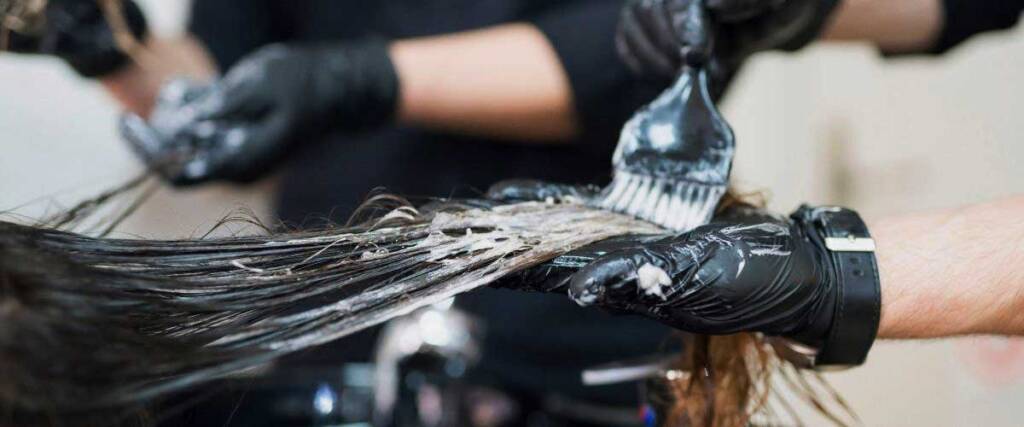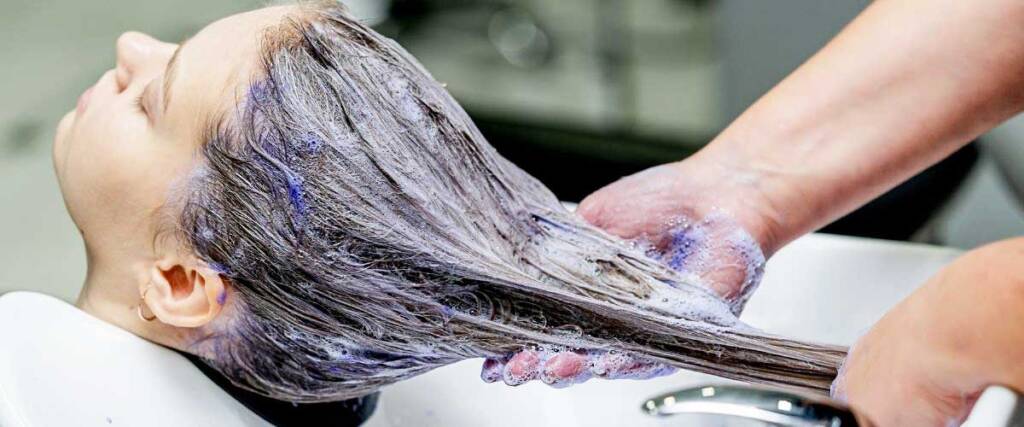If you’re trying to decide on a dye wet hair, it may seem that you have many more questions like can you dye wet hair? We’re always trying to answer the most common and unique hair color questions, such as the best hair dye and how often the hair can be dyed.
With the recent hair coloring techniques and trends in hair color, you’ll always have a new lesson to master on your way to attaining and maintaining perfect hair with the perfect color. If you’re looking to alter your hair’s hue, one worry that’s foremost in your mind is whether or not you’re able to dye your hair even when it’s still wet.
Although the rules of hair schools suggest that the dye shouldn’t be applied to dry hair, We’re going to share some instances in which coloring your hair when it’s still damp can provide benefits. Many people think that hair must be damp before dyeing it. Well, they are entirely wrong. Nothing stops you from coloring your hair when it’s still wet, but you shouldn’t.
Products for hair coloring contain two essential ingredients:
- Ammonia
- Hydrogen peroxide
Although it’s crucial to use high-quality shampoos following coloring, it is essential to maintain your hair’s dryness during the dying process to ensure that these two substances do not go away.
The most important thing is to dye your hair whenever it’s time to wash it. Since we’ve determined that coloring your hair when it’s still color hair wet or dry isn’t an idea, let us explain why you shouldn’t.
Also, read this article
Are there any Hair Dryer Side Effects?
The Steps to Color your Hair
If you plan to color your hair even when it’s still wet, you must make it happen correctly. The only way you will be able to do it successfully is by adhering to these guidelines. Keep in mind that this is for coloring your hair. It is not bleaching your hair. Don’t apply peroxide to dye wet hair. It will damage your hair and cause irreparable damage. Can you dye damp hair?
- It is recommended to dampen your hair throughout. Do not wash or shampoo the hair in any manner. Dyeing your damp hair doesn’t mean clean, wet hair. Keep water handy to ensure that your hair stays moist during the entire process.
- Beginning at your roots, color your hair as usual. Be sure to ensure that you apply the same amount of dye on wet hair all over your head. The damp hair is likely to cause the paint to be diluted; therefore, make sure you’re using more shade than you usually do to your hair.
- Comb your hair with a comb to ensure that your hair has been infused with hair dye. Make sure your hair remains moist. You can then allow it to dry for the time you need and follow the directions further.
- It is important to note that it won’t be permanent if you decide to dye your hair while it’s damp. Applying semi permanent hair color to wet hair will fade away after a few washes.
Also, read this article
Reasons To Dye Your Hair While Wet
If you decide to apply the color of your dye wet hair, there’s an increased chance that it won’t get spread evenly, and it won’t look beautiful. Water may alter the color of your hair. If your hair has been damaged or is a little dry, applying dye when it’s still wet could reduce the paint and ruin the entire process. In this instance, it is recommended to consult your hairdresser if you need to dye your hair.
More prone to damage When the hair you’re wearing is dry, its natural oils shield it from the strong chemicals that are found in dyes for hair. If your hair is damp, this isn’t the case which means that your hair will be more susceptible to suffer damage because the pores are open, and the scalp isn’t shielded in the way it is when it’s dry.
Based on the kind of hair dye you choose and the desired color of your hair, Applying stains to wet hair may have advantages. Here are a few of the most frequent hair coloring issues which require damp hair.
To Add Subtle Dimension
A very well-known method of dyeing wet hair is to use the technique of balayage wet. This low-maintenance method for highlighting produces beautiful, brightened ends that add a subtle spark of color. This technique requires a keen eye, and instead of dyeing hair, it uses bleach. It is recommended to seek a professional colorist for your benefits of wet balayage rather than attempting it at home.
Better Coverage For Coarse
For those with coarse or thick hair, often dyeing your hair damp rather than wet could spread the shade more evenly. Based on the length and density of your hair, together with the kind of hair dye used in the process, the moisture boost can ensure that every inch of your gorgeous hair is covered in the color you pick.
Also, read this article
Types of Hair Color
It’s an additional disadvantage, but coloring your hair wet won’t apply to every color. Permanent color jobs require Dry hair dye. It could be a matter of going lighter or darker. If you’re trying to lighten your hair, which is achieved using bleach, you’ll require dry hair to complete a precise application that won’t leak. If you’re applying permanent colors to darken your hair, dry hair is preferred so that it can penetrate and change the condition of the hair to a more profound degree than the surface. This being said, you have a variety of choices of colors for dye wet hair:
1. Semi-Permanent Color
Semi-permanent colors do not contain peroxide or ammonia developers in these colors. They are designed to coat your cuticle. Because their function is to slightly alter or enhance the appearance of your hair and give it an even more subtle change over less time, the formulations don’t get affected by water. These colors are great for wet hair since they don’t have the effect of significantly altering or lifting the hair’s appearance in any way that is permanent.
2. Demi-Permanent Color
The primary distinction between a semi- and a demi-permanent shade is that demi-permanent colors penetrate the hair shaft on an even deeper level than the superficial layer of semi-permanent. Because of your color’s more excellent absorption, the demi-permanent color will last longer than a semi-permanent color.
Even with whether there is ammonia, it’s an indefinite color, so applying it to hair that is wet will not impact the effectiveness of your color much. There is one minor issue with this is that hair has the potential of absorbing more water but not as much dye, which may cause a slight to dilute in the color formula a little and could reduce a few shampoos from the lifespan of your color. This isn’t a significant issue; however, it’s something to be aware of!
3. Other Temporary Dyes
It is possible to not think of them as semi-or colorants that are semi-permanent; however, those fun, vibrant pops of bright pink, as well as other pastel and highlighter shades, as well as the toners that neutralize your highlights in the shampoo bowl, are categorized as temporary dyes and are safe to use on damp hair.
Also, read this article
The Advantages of Coloring Wet Hair
Many of us dye hair even when it’s dry; coloring your dry hair comes with several benefits worth keeping in mind.
1. You Only Need a Small Amount of Dye
A tiny amount goes a long way when you dye your hair with water. This means that less amount of color will be distributed equally. This is unlike dry hair, where you have to be careful when applying the dye and make sure that you use it to all the patches.
2. Wet Hair Absorbs More Color
If our hair is moist, it is at a higher porosity. That means our cuticles are open and can take in more ingredients and liquids. The same is true for color dyes as well. Applying the dye wet hair will be absorbed deeper than it would when hair is dry.
3. Less Mess
Everything becomes easier when you apply hair color dye to wet hair. You’ll undoubtedly leave less mess if you’re applying it in the bathroom or shower. You can use the bottle to fill it and mash your hair. This is undoubtedly much more convenient than brushes, bottles, and dry hair spray.
Also, read this article
The Disadvantages of Coloring Wet Hair
Alongside the advantages of dyeing hair, wet comes some drawbacks. When you think about whether dye hair is wet, be aware of these issues.
1. Potentially Uneven Application
Although wet hair is more absorbent and is more efficient in distributing color, it also can result in an uneven application. There is a chance that you’ll end up with unwelcome hair color, with a more or less drastic change that you’ve not planned. If this occurs, experiment with dyeing the hair dry.
2. Wet Hair Prone to Damage
The cuticles function as the shield we use to protect our hair. But, when they’re opened, hair is susceptible to damage, and the bonds that secure our hair weaken.
Dry hair can be a problem. The natural oils we produce are working to protect our hair strands. If your hair is damaged by moisture easily, there are some ways to ensure it’s healthy, particularly after the treatment of dyeing. Avoid using blow-drying; heat and dry it off with towels.
3. The color could be uneven
The moisture helps spread the color to your hair. The color may focus on specific areas and fade off in others. This results in somewhat unevenness in certain regions.
4. The color will be diminished
This is why professional hairstylists color your hair even if it’s dry rather than wet. Wet hair particularly if it’s already damaged or dry will absorb water before you apply the color, which means it won’t be able to soak into the hair cuticles.
In contrast, the shade will appear more muted or subtle, laying closer to your hair. In some situations, the color might not absorb completely and simply wash off when you first wash your hair.
5. Hair is more susceptible to being damaged
It’s more fragile hair when wet because the cuticles of hair expand when they’re wet. Furthermore, damp hair doesn’t get protection from oily substances in the same way it is dry. So, be gentle when applying the coloring treatment.
Why Can You Dye Wet Hair With Semi-Permanent Color?
The reason you’re advised to apply semi-permanent dye wet hair is due to the same reason that it functions using a permanent stain. Semi-permanent colors do not contain ammonia, so damp hair is required because the hair’s shaft is more open and better equipped to absorb the dye.
You should avoid using permanent dyes for dry hair as the oils present in the hair are intended to shield your hair from damage, but they can also hinder your hair from absorbing colors. If you apply the dye to your hair that is damp, then you’ll have to use less paint to achieve the same amount of color. This means that you’re less likely to be damaged.
Benefits of coloring wet hair using a semi-permanent color
- It adds subtle depth to the hair.
- dye wet hair assists in the better covering of hair.
- The coarse and thick hair is easily dyed if it is wet.
Also, read this article
How long Should you Wait to Bleach your Hair Again?

FAQ
How can I get my hair ready for coloring?
New hair will be longer-lasting when you have a clean hair base. Leave your hair in an entire day to allow natural oils to grow is best when you’re planning on bleaching or lightening your hair. Natural oils form a barrier of protection on your scalp to prevent it from becoming irritated by the lightener.
Can You Dye Wet Hair Without Damaging It?
A big concern you might face when you dye your hair can be how you prevent getting frizzy, broken ends. The good thing is that dye wet hair help guard your hair from harm. The type of hair you have will determine the color.
If you’re trying to dye hair that is heavy, dirty, or oily could affect the way the dye is absorbed into the hair. The purpose of dying dry hair dry is that the oils naturally present in the hair are meant to shield it. However, using lesser dyes means more minor damage.
Is dying your hair haram?
Can you dye wet hair black? Hair dyes can be colored to match your natural hair color. However, you should avoid black. Other hair dyes that are bizarre, like pink, blue, silver, purple, and so on. are also not permitted. Only use colors of hair dye that resemble human hair, like dark brown, brown, blonde, etc.
What is why students are not permitted the right to color their hair?
It is not possible to color our hair with a shade that would “not be found naturally in humans.” The guide advises students must not dress in a way that ” creates distraction, draws undue attention, or detracts from the educational environment.” In particular, hair that draws “undue attention” is not permitted.
Why don’t people wash their hair before coloring?
The idea of not washing your hair before coloring is a concept that dates back to the past when harsh chemicals were utilized to create dyes. If natural oils were applied to the hair, this could ensure minor damage to your scalp, and the itchiness is decreased.
At the time of dying hair, when should you begin timing your hair?
Apply as fast as you can and begin the timer when the application has been completed. Be aware that the color of the bottle or bowl may not be as vibrant as the color of the hair. Hair is a catalyst to create shade. The process of hair color can take 30-40 minutes.
Do I wash my hair with cold water following dyeing it?
Making sure you avoid common mistakes to protect the hair dyed is crucial. One common mistake that people make is washing their hair with hot or warm water immediately after being dyed. The hot water will increase the porosity of your hair.
This could permit the pigments in the dye to leak out via the hair’s pores. This could cause a loss of hair color. Instead of using warm or hot water to wash the hair dyed (right after coloring it or after showers), use cold water to wash your hair, and use a cold water rinse end the.
Can you put garnier hair dye on wet hair?
It is possible to dye wet hair, but the color may be less intense, and it may be less durable, and it may be less uniform in comparison to when you colored it once you were dry.
Do you have the ability to color your hair black when you’re still wet?
Hair dyeing can be done when it’s still wet. However, the color may be less bright, it may take longer to last, and it may appear a bit less uniform compared to when you colored it once the hair was dried.
Can you dye wet hair with permanent hair dye?
Because the color is deposited more on the top of hair strands instead and is less absorbed, the color will not take long before the hue fades or fade, which means you’ll require dyeing your hair more quickly.
What are the things you should not do with hair that is wet?
- Do not brush hair that is wet using a regular brush.
- Don’t Apply Hairspray on Wet Hair.
- Avoid pulling dye wet hair back into a ponytail or Bun.
- Never Use a Straightener to dye wet hair.
- Do not be in Bed with wet Hair.
Conclusion
You can dye your hair when it’s still damp; however, it is strongly recommended. Hair coloring that is wet is acceptable in various situations, such as those in salons, though most people overlook the case in these instances.
After your highlights have been completed, you are escorted into the bowl for shampoo, where your foils are removed and bleach is rinsed from your scalp and hair. If you do not apply it correctly, it could lose hair dye.
Also, read this article


